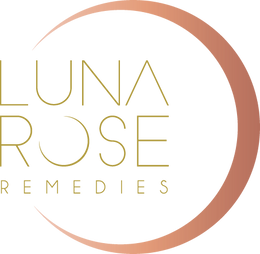Essential oils have been used for thousands of years for their medicinal and healing properties and their ability to heal an array of issues. Did you know most essential oils are anti bacterial and many are also anti microbial, anti fungal, anti viral and anti septic, which means these oils really are a must for your first aid box.
Here are my top three essential oils to keep in your first aid box:
TEA TREE (Melaleuca alterifolia)

Image Source
Native to Australia, this tree was first discovered by Captain Cook's sailors in the 18th century. They brewed a tea with its leaves to fight scurvy, hence the plant's common name. Research has proved that Tea Tree has powerful anti microbial and anti fungal effects.
I have used Tea Tree for a variety of first aid issues. My husband had an infected ingrown toe nail that was causing a lot of pain. The area was very inflamed and obviously infected (lots of pus present). I put a drop of tea tree onto a Q Tip and applied it directly to the area; we did this morning and night for a day or two. Within 24hrs the pus had visibly reduced and the swelling had calmed down. Within 2 days the infection had completely cleared up and the area looked as good as new.
Just to be clear, Tea Tree is one of the only essential oils (along with Lavender) I'd apply a very small amount neat on to the skin and in acute medical situations only, i.e, insect bites, wounds, infections.
I also had great luck with Tea Tree mixed in a Jojoba carrier for an anti fungal rash I has on my neck and face last year. I blended up a 5% dilution and applied liberally 3 times a day. Within a couple of days the rash had disappeared. Other uses are applying onto cuts, wounds, abrasions and insect bites. A great book to learn more about the wonderful healing properties of this oil 'Tea Tree Oil First Aid Handbook - 101 Ways to Use Tea Tree Oil by Cynthia B. Olsen and it's true, the uses go on and on.
Safety
* Tea Tree is non toxic and non irritant
* Tea Tree goes off quickly, so be sure to keep it no longer than six months. For optimal life duration, keep it in the fridge!
* Tea Tree can be mildly sensitising, therefore use it well diluted if you have a sensitive or allergy-prone skin.
LAVENDER (Lavendula augustifolia)
This herb was originally native to the region of the southern Mediterranean, but now can be found in much of Western Europe. Lavender is a popular essential oil and is most recognised for its ability to bring deep relaxation. What you might not know is that Lavender is a fantastic anti bacterial and excellent at healing a burned skin.
In 1910 French chemist Rene Gattefosse discovered one extraordinary benefit of Lavender. Gattefosse badly burned his hand during an experience in a perfumery plant. He used Lavender essential oil to help with the gas gangrene that was developing on both of his hands. He was later amazed at how quickly his burn healed and with very little scarring. This started a fascination with essential oils and inspired him to experiment with them during the First World War on soldiers in the military hospitals.
Translated from French to English, this is Gattefosse own description of the accident:
“The external application of small quantities of essences rapidly stops the spread of gangrenous sores. In my personal experience, after a laboratory explosion covered me with burning substances which I extinguished by rolling on a grassy lawn, both my hands were covered with a rapidly developing gas gangrene. Just one rinse with lavender essence stopped “the gasification of the tissue”. This treatment was followed by profuse sweating, and healing began the next day (July 1910).”
Lavender is the main essential oil used in my After sun lotion and does as excellent job to reduce the sting associated with sunburn. I have also used Lavender essential oil on oven burns. When this happens I put one drop onto a Q Tip and apply it directly onto the burn. I have never been left with a scar!
Safety
* Lavender is non toxic non irritants go and non sensitising. It is safe to use on children (over 3 years old) at a 0.5% dilution.
HELICHRYSUM (Helichrysum italicum)
Also known as Immortelle or Everlasting, this hardy herb has beautiful brightly coloured daisy-like flowers which remain intact during the entire flowering season - hence the name 'Everlasting'. Come rain or shine it continues to grow and flourish.
Helichrysum is a powerful essential oil and is known for its wonderful ability to help heal bruising. This is due to Helichrysum have anti hematoma properties, therefore it helps to break down old blood and encourages the body to reabsorb it.
I have had great success using Helichrysum on a client who had a blow to the head during soccer practice. The bruising came up almost instantly. I made a 3% blend of Helichrysum in Calendula infused Jojoba oil and asked the client to reapply 3/4 times a day until the bruising had gone. Within 48hrs the bruising had gone from purple to dark green, and by day 4 it had pretty much healed. Amazing considering the intensity of the impact.
It's also a great anti inflammatory oil too. Excellent for sensitive, inflamed skin, acne rosacea and edema (swelling).
Safety
* Helichrysum is non toxic and can be a mild irritant on sensitive skin. Always use diluted.
* Avoid during Pregnancy.
* Do not use on Children under 4 due to its chemical make up.
What are your essential oils do have in your first aid box?



